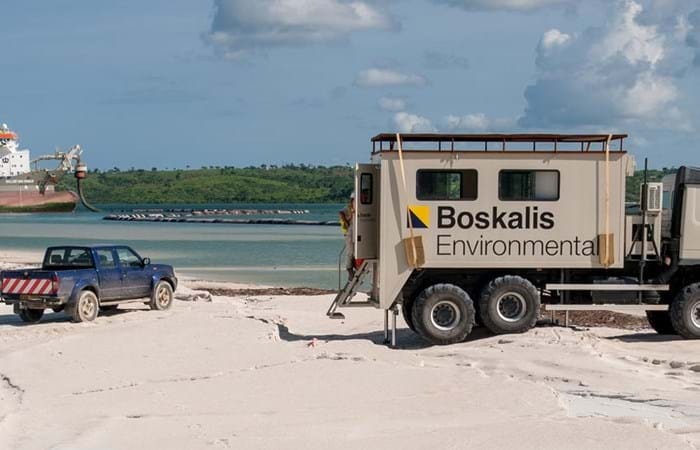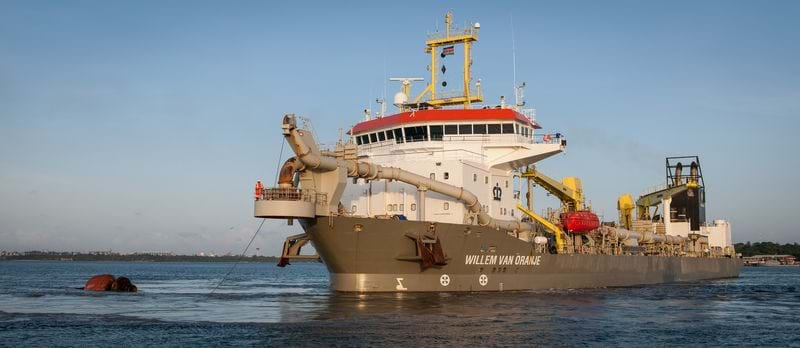The Port of Mombasa is currently the biggest port on the coast of East Africa north of Durban, and the only international port in Kenya. It is now in the throes of a huge expansion drive to both increase cargo handling capacity and accommodate Panamax and Post Panamax vessels. The port is a transit route for, mainly, Uganda, Rwanda, South Sudan and Northern Tanzania. The current container terminal has an installed capacity of 250,000 TEU but handled more than 770,000 TEU in 2011. The port will raise its profile as a regional hub by building a second container terminal with a capacity of 1.2 million TEU. The port authority decided to construct the container terminal in phases.
On 1 August 2012, Boskalis International B.V. signed the sub-contract for the dredging and reclamation works for the first construction phase for the second container terminal. Before construction of the quay walls, three deep trenches were dredged by TSHDs Argonaut and Willem van Oranje to remove the weak subsoil and replace it with sand. Boskalis soil specialists invested large amounts of time and energy in sourcing suitable sand in the immediate vicinity of the project. After the removal of 1 million m3 of soil, the soil improvement area was filled with offshore sand by TSHD Willem van Oranje and a spray pontoon. Reclamation had to take place very carefully to avoid mud slides and circular slip. During reclamation to +1 m CD, the spray pontoon SP10, positioned on six anchors, was used to apply layers of 75 cm; that part of the work was completed successfully on 11 March 2013. The remaining sand was applied in layers up to +5.5 m CD using land pipelines. Boskalis successfully met some challenges with extreme local settlements. The +5,5 m CD level was completed on 7 May 2013. This activity was followed by a surcharge fill to a maximum of +11 m CD to reduce settlement time.

